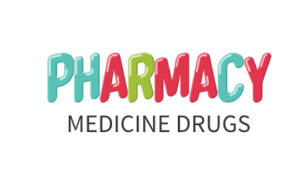Symptoms of Hemophilia
The extent of symptoms depends on the severity of clotting factor deficiency. People with a mild deficiency may bleed in the case of trauma. People with a severe deficiency may bleed for no reason. This is called “spontaneous bleeding”. In children with hemophilia, these symptoms may occur around age 2.
Spontaneous bleeding can cause the following:
- Unexplained and excessive bleeding from cuts or injuries, or after surgery or dental work
- Many large or deep bruises
- Unusual bleeding after vaccinations
- Pain, swelling or tightness in joints
- Blood in urine or stool
- Nosebleeds without a known cause
- In infants, unexplained irritability Emergency signs and symptoms of hemophilia include:
- Sudden pain, swelling and warmth in large joints, such as knees, elbows, hips and shoulders, and in arm and leg muscles
- Bleeding from an injury, especially in severe form of hemophilia
- Painful, prolonged headache
- Repeated vomiting
- Extreme fatigue
- Neck pain
- Double vision
Hemophilia Risk Factors
- Hemophilia A and B are more common in males than females because of genetic transmission.
- Hemophilia C is an autosomal inherited form of the disease, meaning that it affects males and females equally. This is because the genetic defect that causes this type of hemophilia is not related to sex chromosomes.
Complications In Hemophilia
Complications of hemophilia may include:
- Deep internal bleeding: Bleeding that occurs in deep muscle can cause limbs to swell. The swelling may press on nerves and lead to numbness or pain.
- Damage to joints: Internal bleeding may also put pressure on joints, causing severe pain. Left untreated, frequent internal bleeding may cause arthritis or destruction of the joint.
- Infection: People with hemophilia are likelier to have blood transfusions, increasing their risk of receiving contaminated blood products. Blood products became safer after the mid 1980s due to screening of donated blood for hepatitis and human immunodeficiency virus (HIV). The risk of infection through blood products also has decreased substantially since the introduction of genetically engineered clotting products (recombinant factor concentrates).
- Adverse reaction to clotting factor treatment: In some people with hemophilia, the immune system has a negative reaction to the clotting factors used to treat bleeding. When this happens, the immune system develops proteins (known as inhibitors) that inactivate the clotting factors, making treatment less effective.
Diagnosis For Hemophilia
Hemophilia is diagnosed through a blood test and measure the amount of clotting factor present. The sample is then graded to determine the severity of the factor deficiency:
- Mild hemophilia is indicated by a clotting factor in the plasma between 5 and 40 %.
- Moderate hemophilia is indicated by a clotting factor in the plasma between 1 and 5 %.
- Severe hemophilia is indicated by a clotting factor in the plasma of less than 1 %.
Treatment For Hemophilia
While there is no cure for hemophilia, most people with the disease can lead fairly
normal lives. Treatment for bleeding episodes: Therapies to stop bleeding depend on the type of hemophilia:
- Mild hemophilia A: Slow injection of the hormone desmopressin (DDAVP) into a vein can stimulate a release of more clotting factor to stop bleeding. Occasionally, DDAVP is given as a nasal medication.
- Moderate to severe hemophilia A or hemophilia B: Bleeding may stop only after an infusion of recombinant clotting factor or clotting factor derived from donated human blood. Repeated infusions may be needed if internal bleeding is severe.
- Hemophilia C: Clotting factor XI, the factor missing in this type of hemophilia,
plasma infusions are needed to stop bleeding episodes. Patients with Hemophilia C do not generally bleed spontaneously. So there is no need for prophylaxis. If recognized early, all vaccinations should be given subcutaneously because of the risk of inducing a muscle hematoma. These patients should be vaccinated against hepatitis A virus and hepatitis B virus, because they have or may be exposed to plasma products as part of their treatment. - Clot-preserving medications (antifibrinolytics): These medications help prevent clots from breaking down.
- Fibrin sealants: These medications can be applied directly to wound sites to promote clotting and healing. Fibrin sealants are especially useful in dental therapy.
- Physical therapy: It can reduce signs and symptoms if internal bleeding has damaged joints. If internal bleeding has caused severe damage, may need surgery.
- First aid for minor cuts: Using pressure and a bandage will generally take care of the bleeding. For small areas of bleeding beneath the skin, use an ice pack. Ice pops can be used to slow down minor bleeding in the mouth.
Related Feeds
Hemophilia What Is It ?-Definition | Hemophilia Types & Causes
Acquired Hemolytic Anemia Symptoms Treatment &Diagnosis | Prevention
Anemia Symptoms Complications Prevention & Treatment Drugs Prescribed
Symptoms of Asthma & Pathophysiology of Asthma
Ischaemic heart disease (IHD) What It Means?| Etiology & Pathogenesis
